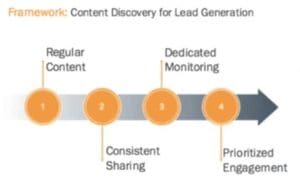Even without the stats I can give you the stats, I’ve read them so often. And you should Google them yourself anyway if you are interested. (A few stats are below)
- 218 million active users (let’s call them accounts, shall we?).
- 35% of your followers are probably bots.
- Over 50% that join Twitter never tweet.
- After 30 days, 60% of Twitter users will drop off and not come back.
- 65% of the tweets in my ALL updates stream are coupons, deals, porn, or MLM spam.
- Each month 10 – 15 of my favorite social media folks stop using Twitter. (no tweets for over 30 days)
So what’s the issue? Why is Twitter hard to understand? Why are so many users abandoning Twitter, even the ones who were early champions of the platform? What’s wrong with the Twitter experience?
At the launch of Twitter, at SXSW 2006, it was little more than a way to keep tabs on your friends at SXSW. “We’re going for Pizza at 10 pm at…” I abandoned my first Twitter account about a week after the show. I was not interested in paying attention to the chatter of check-ins. (Actually, I’m still a bit anti-check-in. I see the value, I think it may be lazy social media.)
Then in early 2008, I rejoined Twitter as jmacofdell. (I was on Dell’s Global Online Team.) An hour later I learned that the “ofdell” meant I was tweeting “on behalf of” Dell. Oops. One hour in I changed my Twitter ID to jmacofearth. (I’ve got an eco side, and I liked the sound of it.)
And the issue today is more with robots and spambots and promotional tweets than Twitter itself. Although, I would suggest that Twitter is becoming more complicated to use rather than easier. The new interface is pretty, but now I can’t find some of the tools I used to use without two or three clicks. (A UI/UX fail.)
Aside from the push-marketing uses of Twitter, the platform has an inherent problem that Twitter has no vested interest in fixing. The race to gain followers, any followers, even spammy and sex-selling followers. They all add to your “score.” I mean count. I mean followers.
Early on as people like Ashton Kutcher and Guy Kawasaki were racking up unbelievable stats on Twitter there was an interesting suggestion that might have eliminated the race for followers game altogether. What if Twitter eliminated the Follower/Following count? Every Tweeter would be judged only on their content, not their gamesmanship. The race, the game, and the trashy bot accounts would be gone. (Some of them anyway.)
But that was not to be. So we are still in the quest for followers. (I play the game, of course, I’m in social media.)
But the real problem comes from Twitter itself. Let me give you an example: since my rejoin of Twitter in 2008, I have created no less than 20 Twitter accounts. Most of them for fun. But in all that time I have not gone back and deleted any of those accounts. And you know who counts them as part of their success. Twitter and its 100 million mark.
Why would Twitter EVER eliminate dead accounts? It would reduce their statistical relevance in the struggle for social media relevance. While Twitter has done some work to kill spam and bot accounts, they are not doing anything to eliminate the root of the cause. A simple change of the Twitter platform, much more impactful than any User Interface redesign would be to delete the Follower/Following count from Twitter.com. There would quickly be tools to do the counts for you, but most of the spammers never go past Twitter.com to use tools like Hootsuite or Tweetdeck. Kill the count and you kill the race.
While you can see why the growth of Twitter is a great success story, the failure of Twitter to keep those initial users beyond 30 days is an epic fail. Or #epicfail. And in the same problem, IF Twitter was to actually delete the thousands of new spam accounts that are created every hour, guess what? Their stellar growth might be a lot less stellar. And if the abandonment rate were made public, fewer and fewer people would even try to figure Twitter out at all.
So if I played by my own suggestions, I would use TwitBlock on my jmacofearth account and eliminate the 35% of spammers that are “Followers.” And a year ago I was doing just that, and suggesting that everyone block the spammers. But why would I reduce my imaginary “influence” on Twitter by 35%?
There are two good ways to learn who your real followers are and what your actual influence is via those followers.
1. Tweetreach.com (is a good tool, that approximates your “reach” or how many eyeballs had the opportunity to see your tweet. Remember tweets go by in about 10 – 30 seconds and are gone. Most people don’t use an external tool to manage their streams.)
2. When you tweet a link to your own post, say something you are hopefully influential about, such as social media. Go look at the statistics. Let me give you an example from my own site today. (11-22-14)
Got it? Consider the 30-day stats below.
970 direct referrals from Twitter (with 21k followers): I can tweet about a new post 3 – 5 times in a week. (If a post becomes a hit, I will up this practice over longer periods of time, as long as the traction is increasing.)
77 referral clicks from LinkedIN and 100 from Facebook (combining mobile w/ desktop) So even with all of my efforts, Twitter still delivers 5 times the referrals. Can you ignore that demand gen driver? (Note: you’d better get savvy about your mobile site as well, since over half my Facebook referrals are on phones!)
Don’t think your influence is huge just because your numbers are huge. And if Twitter would get real about the users and delete the fake follower counts we would have a very different conversation ON Twitter. Instead, we talk ABOUT Twitter in other places that offer more interaction.
John McElhenney — let’s connect online
@jmacofearth & Facebook & LinkedIn & The Whole Parent
Please check out a few of my books on AMAZON.
Especially this one, about living a creative life of intention and joy. No mention of tv or pharma





